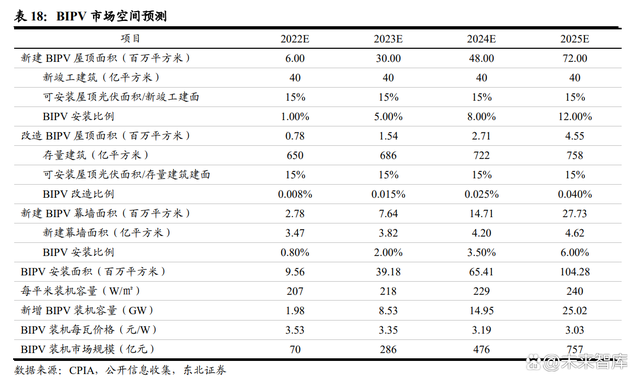In depth research on photovoltaic industry: distributed power stations may become a blue ocean, and perovskite may promote BIPV outbreak
1.1. Carbon reduction is an international consensus, and photovoltaic power generation is the main force of clean energy
With the emergence of greenhouse effect hazards, reducing carbon emissions and achieving carbon neutrality has become an international consensus. At present, photovoltaic power generation has economic advantages. With the cost reduction and efficiency increase of the whole industry, the levelized electricity cost of PV on the commercial side of China has approached the benchmark price level of coal burning. PV power generation has become a clean energy with mature technology and leading cost, and large-scale application has become a realistic economy. At present, the technology iteration in the industry is rapid, the trend of cost reduction and efficiency increase is obvious, and the economy is expected to be further enhanced in the future.
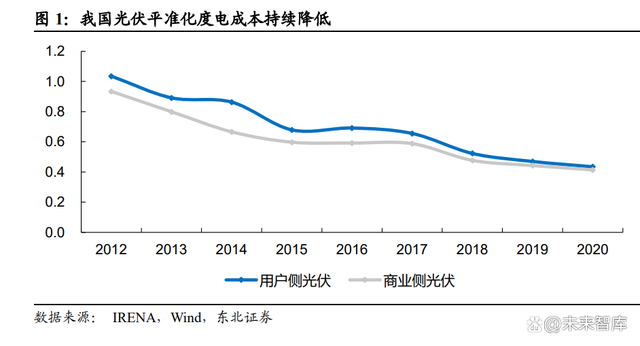
China is rich in solar energy resources, with the theoretical reserves of terrestrial solar energy up to 1.86 million GW. It is expected that the new PV installations at home and abroad will continue to grow on the basis of a high base. According to the prediction of CPIA, China's new installed capacity is expected to be 75GW~90GW in 2022, 90GW~110GW in 2025, with a median CAGR of 4.9% in four years; The global installed capacity will increase 195GW~240GW in 2022 and 270GW~330GW in 2025, with a CAGR of 8.4% in 4 years.
1.2. Enterprises attach great importance to photovoltaic power generation, including Tesla
Enterprises attach great importance to photovoltaic power generation, and Tesla is no exception. However, unlike many players who have entered the photovoltaic power generation industry chain in recent years, Tesla has determined a long-term photovoltaic power generation business plan since its inception. The Secret Blueprint of Tesla Motors in 2006 clarifies its route planning: (1) build sports cars; (2) Build a affordable car with the money earned; (3) Use the money earned to build a more affordable car; (4) While doing the above, provide the option of zero emission power generation. The first three steps were achieved in 2016.
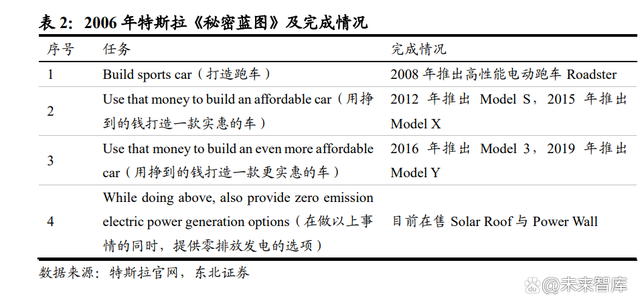
The Secret Blueprint - Part II guides Tesla's development goals in the second phase, and the photovoltaic roof ranks first. From the perspective of Tesla's current product line, the photovoltaic roof products Solar Roof, Solar Panels, and energy storage systems Power Wall and Mega Pack are the key to Tesla's undertaking the last step of the 2006 version of the secret blueprint and the first step of the 2016 version of the secret blueprint. They are of great significance and have a promising future.
1.3. Wide application scenarios of photovoltaic power generation, distributed photovoltaic may usher in historic opportunities
The photovoltaic power station can be divided into centralized photovoltaic power station and distributed photovoltaic power station. Among them, centralized large-scale photovoltaic is usually built in desert, Gobi and other areas, while distributed photovoltaic is generally built on the roof, roof, plant roof and other places. Most of them are based on the surface of buildings to solve the power consumption problems of users nearby, and realize the compensation and external transmission of power supply balance through grid connection.
In recent years, the proportion of distributed PV installations in all new PV installations in China has shown a fluctuating upward trend; In 2013, China added 16.3GW of PV installed capacity, including only 0.8GW of distributed PV, accounting for 6%; In H1 2022, China will add 30.9GW of PV installed capacity, including 19.7GW of distributed PV, accounting for 64%.
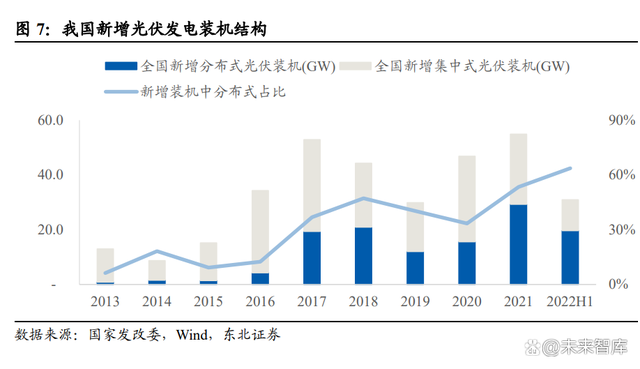
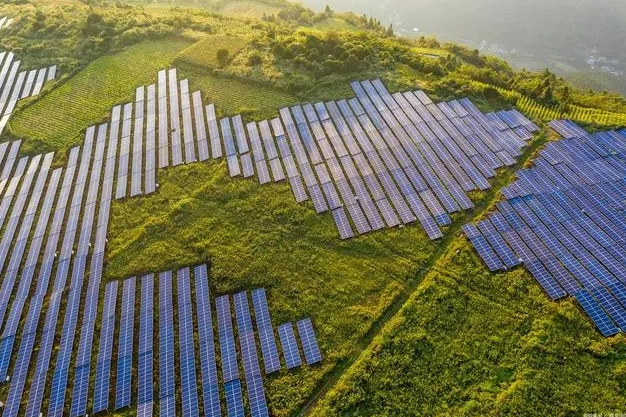
In China, the whole county promotes the coordinated development of roof photovoltaic resources. In June 2021, the National Energy Administration issued the Notice of the Comprehensive Department of the National Energy Administration on Submitting the County (City, District) Roof Distributed Photovoltaic Development Pilot Scheme, requiring all regions to actively coordinate the implementation of roof resources and develop and build in the way of the whole district, street, town, township, etc., of which: (1) the proportion of the total roof area of the party and government organs that can be installed with photovoltaic power generation is not less than 50%; (2) The proportion of the total roof area of public buildings such as schools and hospitals that can be installed with photovoltaic power generation shall not be less than 40%; (3) The proportion of PV power generation that can be installed on the total roof area of industrial and commercial plants shall not be less than 30%; (4) The proportion of the total roof area of rural residents that can be installed with photovoltaic power generation shall not be less than 20%.
The EU solar energy strategy actively advocates the development of roof photovoltaic. In March 2022, in view of the Russian Ukrainian war, the European Union proposed the REPowerEU plan, which plans to accelerate the development of clean energy, improve energy independence, and get rid of dependence on Russian fuel imports by 2030. In May 2022, the European Union released its solar energy strategy, proposing measures including fully developing roof solar energy and piloting vehicle mounted photovoltaic. Among them, the requirements for mandatory installation of solar roofs are put forward for the following buildings: (1) from 2026, all new public buildings and commercial buildings with a practical floor area of more than 250 square meters; (2) From 2027, all existing public buildings and commercial buildings with a practical floor area of more than 250 square meters; (3) All new residential buildings will be built from 2029.

Distributed PV may usher in historic opportunities. Distributed photovoltaic power generation has the advantages of wide application space and saving power transmission and distribution losses when it is close to the user end. With the development of technology and the construction of power grid, it has a broad development prospect. In March 2022, the Ministry of Housing and Urban Rural Development issued the "Fourteenth Five Year Plan" for Building Energy Conservation and Green Building Development, proposing that by 2025, more than 50GW of solar photovoltaic installed capacity of new buildings will be added nationwide, more than 350 million square meters of existing building energy conservation renovation area will be completed, and more than 50 million square meters of ultra-low energy consumption and near zero energy consumption buildings will be built. Under the trend of global carbon reduction and energy independence, we believe that various countries and regions will also continue to introduce relevant policies to encourage the application of distributed photovoltaic power generation systems in new buildings and renovation projects. Distributed photovoltaic may usher in historic opportunities.
1.4. Chinese manufacturers may fully benefit from BIPV development trend
At present, many Chinese enterprises have entered Tesla's solar energy industry chain, which will benefit from the rapid development of Tesla's photovoltaic business. According to the information disclosed by the listed company itself, Amarton is the main supplier of Tesla PV roof Solar Roof, and has a long-term layout in Tesla PV roof glass and other fields; Xiuqiang has been connected to the Tesla photovoltaic roof project since 2019. Preliminary sample confirmation has been completed in the early stage, and products are being continuously upgraded according to demand; Longji Green Energy supplies a small number of components.
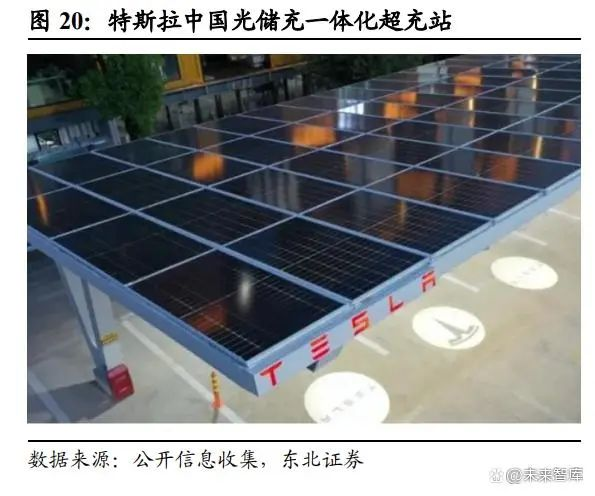
Many domestic manufacturers have launched their own brand BIPV products, or become strong competitors worldwide. Yingli, Longji, Goodway, Dongfang Risheng, Trina Solar and other enterprises have also launched their own brand BIPV products, focusing on and making breakthroughs in power generation efficiency, integrated energy storage function, waterproof and fire prevention and other functions. Considering China's advantageous position in important links of the photovoltaic industry chain, such as silicon materials and crystalline silicon modules, we believe that China's own brand BIPV products have more advantages in the industry chain than overseas brands such as Tesla, and are expected to become strong competitors worldwide.
2. Historical dialectics of photovoltaic cell development - thin-film cells may regain popularity
2.1. Thin film batteries used to have a competitive advantage in stages, and silicon based batteries are the absolute mainstream at present
Photovoltaic cells can be divided into crystalline silicon cells and thin film cells according to different semiconductor materials. Crystalline silicon refers to the material in which silicon atoms exist in the form of crystals. It can be divided into polycrystalline silicon and monocrystalline silicon according to the similarities and differences in the orientation when the crystal nucleus grows into the crystal plane. It can be divided into P-type (Positive) and N-type (Negative) according to the positive and negative characteristics of the electrons carried by the conductive carrier. Thin film battery refers to preparing various thin films into solar cells with little or no silicon.
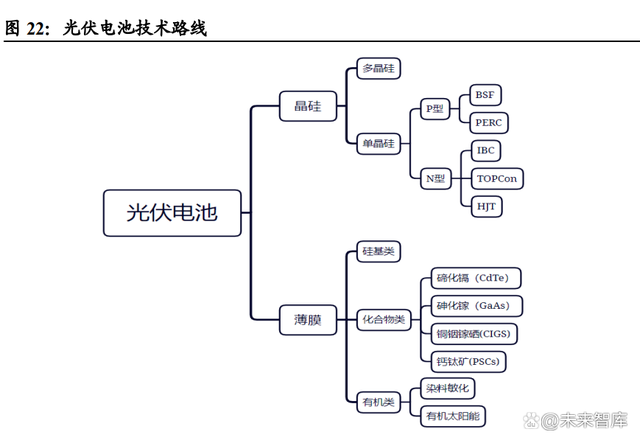
According to Fraunhofer ISE statistics, the market share of thin film batteries in the world once rose to more than 30% in the 1980s, but then declined again due to technological iteration. Benefiting from the progress of First Solar's cadmium telluride battery and the high price of silicon, the market share of thin film battery rose to 15%+in 2009.
At present, crystalline silicon cells have become the absolute mainstream in the photovoltaic cell market, accounting for about 96%; In the crystalline silicon battery market, P-type PERC monocrystalline silicon battery is the mainstream. According to the statistics of CPIA, in 2021, China's P-type PERC monocrystalline silicon chip shipments will account for 90.4% of the silicon chip market. The efficiency of P-type crystalline silicon battery is close to the theoretical limit, and the efficiency improvement space of N-type crystalline silicon battery is less than that of thin film battery.
According to the statistics of CPIA, the average conversion efficiency of large-scale production of P-type PERC monocrystalline silicon in China in 2021 will be about 23.1%, an increase of 0.3 pct year on year. There is limited room for efficiency improvement in the future. The theoretical conversion efficiency of TOPCon, HJT and other N-type monocrystalline silicon cells is higher, and the production process is highly compatible with PERC. However, the current cost is high and the scale of mass production is small. With the gradual improvement of production cost and yield in the future, it is expected to be the main direction of improving the efficiency of the crystalline silicon cell path, but the upper limit of the theoretical efficiency is less than that of thin film batteries.
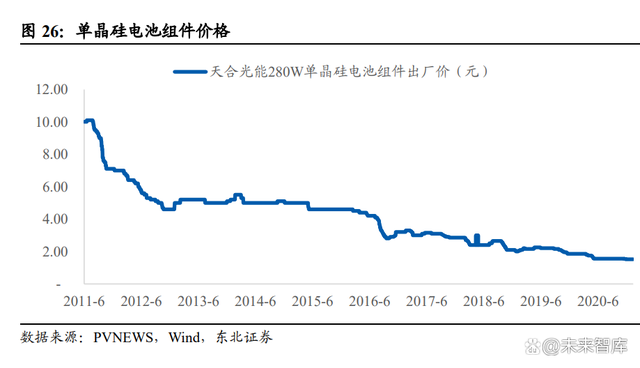
2.2. Thin film battery has huge development potential in the future and is expected to regain market favor
At present, crystalline silicon battery is more economical than thin film battery. At present, the conversion efficiency and industrialization maturity of thin film battery in commercial environment are lower than those of crystalline silicon battery. In most scenarios, crystalline silicon battery has economic advantages. Thin film battery has advantages in many aspects of performance, and has a wider prospect than crystalline silicon battery.
At present, cadmium telluride battery is the absolute mainstream in thin film battery, and First Solar has a monopoly position. By the end of 2021, the global output of thin-film batteries will be 8.28GW, with a market share of only 3.8%, which is at a historical low. Among them, cadmium telluride (CdTe) batteries will account for 97%, and copper indium gallium selenium (CIGS) batteries will account for 245MW, accounting for 3%. At present, FirstSolar in the United States is in a strong leading position in terms of output and battery conversion efficiency, with a market share of more than 90%, almost a monopoly; In recent years, China National Building Materials, Zhongshan REC, Longyan Energy and other manufacturers have also made technological breakthroughs through independent research and development, and may have the opportunity to break the dependence on imports in the future.
Perovskite conversion efficiency has reached new heights, or will become the mainstream application in the future. Perovskite cells are considered as the representative of the third generation photovoltaic cells, and their application prospects are very promising. In June 2022, the Federal Institute of Technology in Lausanne and the Swiss Electronic and Micro Technology Center succeeded in making the conversion efficiency of the perovskite silicon laminated battery exceed 30% for the first time, reaching 31.3%. We believe that although the perovskite battery has not yet achieved large-scale production, it will become the mainstream application in the future by virtue of its subversive conversion efficiency and wide application scenarios, or by promoting the overall development of the thin film battery industry.
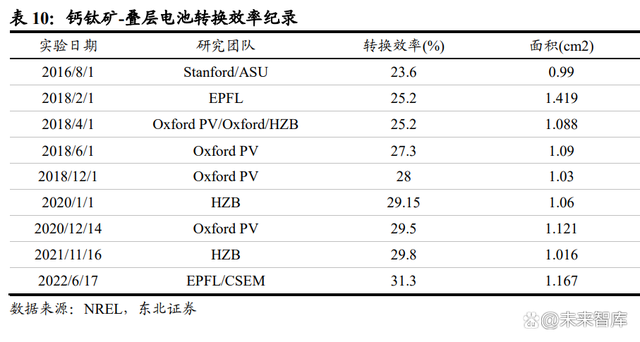
3. Rapid technological iteration, perovskite battery may become mainstream
3.1. Power generation efficiency advantages: strong designability, large space for photoelectric conversion efficiency
Perovskite raw materials can be adjusted and designed. Perovskite is a compound with strong designability. According to the research of Liu Zhang et al., perovskite can achieve continuous adjustable band gap of 1.5~2.3eV by adjusting raw materials, and there is a large space for improvement and optimization of photoelectric performance. By changing the composition of perovskite materials, the color of perovskite batteries will also change, which can be used to prepare color batteries for more application scenarios.
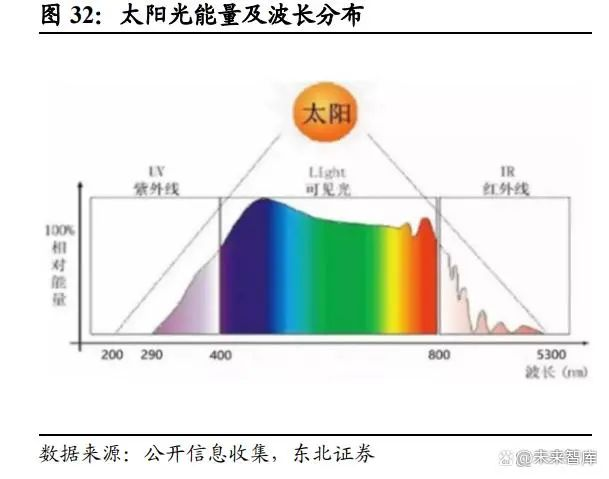
The laminated battery breaks through the Schockley Kuiser conversion efficiency limit. At present, gallium arsenide (GaAs) is the most widely used raw material in laminated solar cells, and the perovskite band gap is continuously adjustable. It is also an ideal material for realizing high-efficiency laminated solar cells, and has important application prospects. In May 2022, Tan Hairen's team of Nanjing University realized the preparation of all perovskite laminated photovoltaic modules for the first time by using coating printing, vacuum deposition and other large area preparation technologies. The conversion efficiency reached 21.7% and the area was 20.25 square centimeters after being certified by an international authoritative third-party testing agency, showing a good industrialization prospect.
3.2. Advantages of production and manufacturing: thin, simple process, energy saving and short production cycle
Excellent absorption efficiency and thin absorption layer. The absorption coefficient of perovskite photovoltaic cells is excellent, so that the perovskite absorption layer only needs submicron (100nm~1 μ m) Thickness, which can produce high-density photogenerated carriers. The difference between the thickness and the thickness is nearly three orders of magnitude. Compared with the crystalline silicon battery, which requires 99.9999% high-purity silicon, the purity of perovskite is only 90%. When the production line reaches GW level, the perovskite battery has more than 30% cost advantage over the mature crystalline silicon battery.
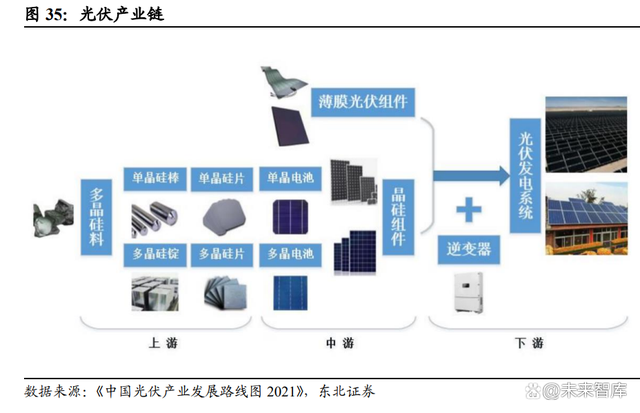
The whole production process of perovskite can be completed in low temperature environment, which is more energy saving and environmental protection. The temperature of the perovskite production process is not more than 150 ℃, while the crystalline silicon needs to be more than 1500 ℃ in both the ingot casting and the crystal drawing link, so the production energy consumption varies greatly. We believe that with the promotion of the dual carbon strategy, energy consumption in the production of photovoltaic cells may also be included in the scope of control. At that time, perovskite cells will also gain certain comparative advantages over current mainstream crystalline silicon cells.
3.3. Commercialization process: stability and size may be the main catalytic factors
At present, perovskite has not been commercialized, and the main bottleneck lies in its stability and size. In terms of stability, the current perovskite battery is sensitive to the temperature and humidity environment, and the materials are prone to thermal decomposition, crystal structure transformation and other problems. In terms of size, the current high conversion efficiency of perovskite can only be achieved under experimental conditions on a cell chip with a size of about 1cm2. After the cell size increases, it is difficult to control the uniformity of the film, and it is difficult to guarantee the photoelectric conversion efficiency and stability. Key experimental progress has been made in the stability of perovskite battery, and industrial implementation can be closely watched.
Large area perovskite preparation has several potential industrialization paths. According to the research of Jin Shengli et al., the current industrial preparation technologies of perovskite can be divided into four categories: (1) solution coating: the coating device drives the perovskite precursor solution to move relatively on the base to form a uniform film; (2) Spraying: apply pressure inside the nozzle to extrude the perovskite precursor solution; (3) Soft film covering: under pressure, polyimide film covering is used to convert the precursor of the complex into a film; (4) Vapor deposition: evaporate in vacuum. At present, the technology and equipment of various preparation methods iterate rapidly, and the prospect is worth looking forward to.
Perovskite cells are expected to become mainstream photovoltaic cells. Although the perovskite battery does not have commercial conditions at present, considering that the development of the perovskite battery has only been 13 years since it was first introduced in 2009, the technology iteration is rapid, and it has huge potential in conversion efficiency, manufacturing cost, application scenarios and other aspects, we believe that it is likely to become the mainstream photovoltaic battery in the future, and the industry chain has huge opportunities. Many domestic manufacturers are already competing for layout.
GCL Optoelectronics has invested in the construction of 100MW perovskite component mass production line since 2020. In May 2022, it announced the completion of hundreds of millions of yuan round B financing to further improve the 100MW production line. In May 2022, Fiberoptic announced the first perovskite α Components; The first batch was held in Quzhou, Zhejiang in July 2022 α The delivery ceremony of components, with a delivery quantity of 5000 pieces, is used for industrial and commercial distributed perovskite power plants in Zhejiang Province. The 150MW perovskite trial production line with the largest capacity in the CCB industry is expected to start trial production this year. Hete Optoelectronics, a subsidiary of Hangxiao Steel Structure, is building a 100MW perovskite/crystalline silicon laminated battery pilot line, which aims to be put into production no later than May 2023, with a conversion efficiency of more than 28%.
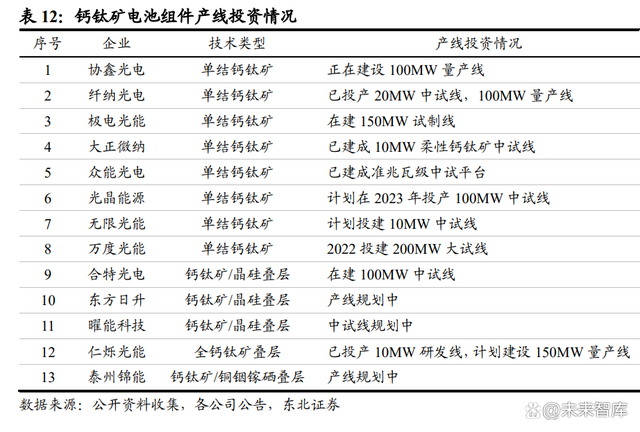
4. The virtual power plant is expected to further provide technical support for BIPV distributed power plants
4.1. Power consumption restricts the development of new energy, and the distributed system increases the difficulty of peak shaving
As the first batch of large wind power bases are put into operation, the installed scale of wind power and photovoltaic power generation in Inner Mongolia, Shaanxi, Qinghai, Gansu, Jilin and other provinces will increase significantly, and the proportion of wind power generation will further increase. At the same time, on May 31, the State Council issued the Notice on Printing and Distributing a Package of Policies and Measures to Stabilize the Economy, which mentioned to accelerate the construction of large-scale wind power photovoltaic bases focusing on desert, Gobi and desert areas. Recently, the second batch of projects will be launched, so the pace of the construction of the second batch of large-scale wind power photovoltaic bases may be accelerated. The new energy power generation in northwest China is mainly consumed on the spot and sent out relying on the stock channel. In the case of limited local consumption space, the construction of a large scenic base has further increased the consumption pressure, so it is necessary to focus on the utilization level of new energy in northwest China.
The sharp increase in the scale of distributed photovoltaic grid connection also puts pressure on the local power grid peak shaving. In recent years, China's distributed photovoltaic has developed rapidly, and the new installed capacity of 2022H1 distributed photovoltaic reached 19.65GW, accounting for 63.6% of the total new installed capacity of photovoltaic power generation in the first half of this year. In terms of grid connection and consumption, large-scale development of distributed PV will increase the pressure on system peak shaving in some regions, causing problems in the construction layout, scale and timing of the transmission and distribution grid and distributed PV, and will also bring great challenges to the safe and stable operation of the power system.
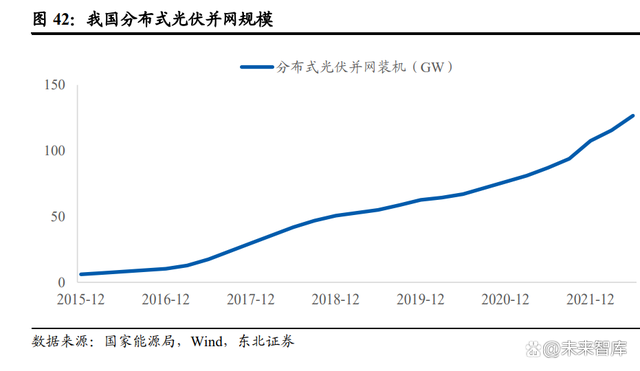
4.2. As a new power consumption technology, virtual power plants are expected to further provide technical support for BIPV distributed power plants
Virtual power plant can realize "source load interaction", which is an important technical means of distributed energy management. Due to the rapid development of distributed photovoltaic and energy storage facilities, how to achieve the functions of "source, network, load and storage" power and electricity balance, energy storage management, strategic operation and optimized coordinated operation has become a key technology in the future. Virtual power plants can aggregate and coordinate distributed energy resources such as clean energy, energy storage system and controllable load on the user side through advanced measurement, information communication, control and management technologies, The implementation of peak shaving and valley filling is an important technical means of distributed energy management.
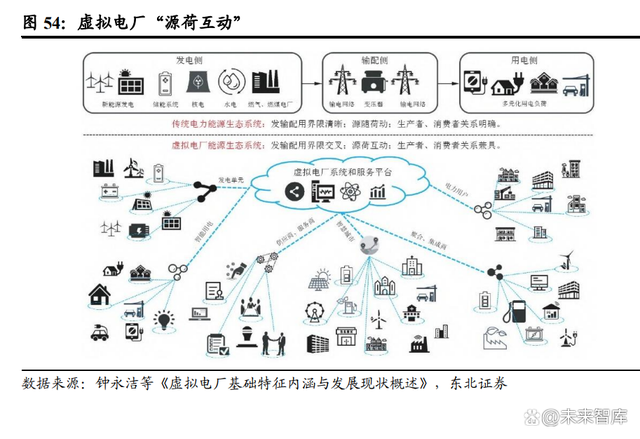
It is economical to realize peak shaving and valley filling of power system through virtual power plant. According to the estimation of the State Grid, the peak load reduction and valley filling of the power system can be achieved through thermal power plants, and the investment of 400 billion yuan is required to meet 5% of the peak load; Through the virtual power plant, only 50 billion yuan to 60 billion yuan will be invested in construction, operation, incentive and other aspects.
Driven by the policy, the construction of virtual power plants in China may accelerate. Policies such as the Fourteenth Five Year Plan for Modern Energy System continued to be introduced to encourage the development of virtual power plants. At the local level, Beijing, Shanxi and other places have also issued specific policies to support the development of virtual power plants. On August 26, following Guangzhou, Shenzhen set up a virtual power plant management center to access 14 load aggregators of distributed energy storage, data center, charging station, subway and other types, with an access capacity of 870000 kilowatts. With the continuous promotion of policies, the construction of virtual power plants in China may accelerate, which is expected to further provide technical support for BIPV distributed power plants.
5. BIPV is expected to promote the distributed photovoltaic power station industry to become a blue ocean
5.1. The high boom of photovoltaic installation market is expected to continue, and the proportion of distributed installation will continue to increase
In July 2022, CPIA raised the forecast of 10GW of new photovoltaic power generation installed capacity in China and the world this year, and it is expected that the photovoltaic market may start an accelerated mode. The proportion of distributed PV in the newly added PV installations has continued to increase.
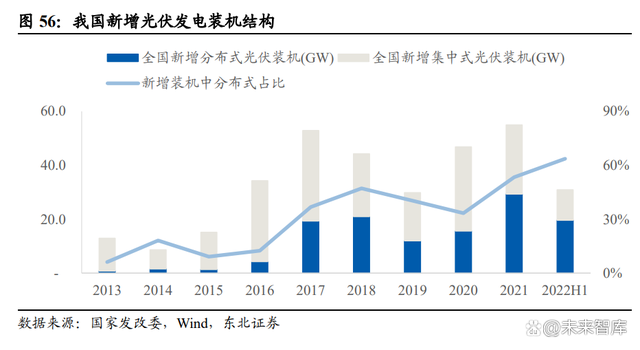
5.2 Distributed PV has become economical, and BIPV has higher benefits than BAPV
The distributed power stations have become economical and their benefits have been continuously improved. According to the statistics of CPIA, the initial investment cost of industrial and commercial distributed photovoltaic in China in 2021 will be 3.74 yuan/W, and the operation and maintenance cost will be 0.051 yuan/W per year. Under the full investment model, the LCOE of the equivalent utilization hours of distributed PV at 1800h/1500h/1200h/1000h in 2021 is 0.19/0.22/0.28/0.33yuan/kwh, which is economical in most regions of the country. It is estimated that the initial investment cost will further drop to 3.53/W in 2022, the operation and maintenance cost will continue to decline slightly, and the economy is expected to further improve.
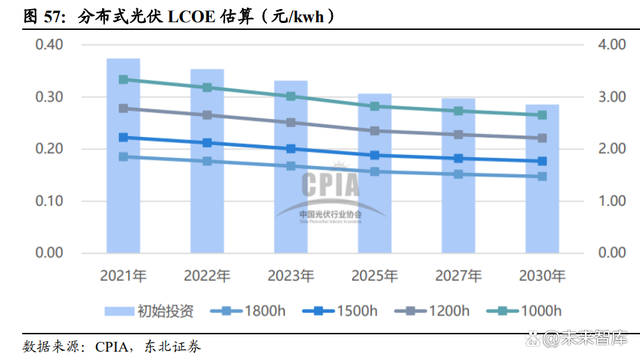
BIPV is more integrated than BAPV, and has advantages in economy and reliability. According to Zheng Dongchi's calculation of the actual case of a steel structure roof scene, BIPV saves 34 yuan/m2 in material cost compared with BAPV, and has a longer service life. It does not involve the secondary installation of photovoltaic components during roof renewal, roof settlement and deformation caused by high load, and has obvious advantages. With the increasingly mature application of BIPV, the permeability of new projects has gradually increased, and its carbon reduction and power generation benefits are worth looking forward to.
5.3 BIPV is expected to become a blue ocean, and the market may have ten times the expansion space by 2025
China's BIPV market lacks authoritative statistical data, so we make assumptions, checks and extrapolations based on multiple data. China's BIPV is still in its infancy. According to the statistics of China Construction Research Institute, the new installed capacity of BIPV of major photovoltaic construction enterprises in China will be 709MW in 2020, accounting for about 0.5% of the new installed capacity of distributed photovoltaic in that year. Due to the lack of authoritative statistics on historical data for key parameters, we comprehensively collected data from multiple sources to make parameter assumptions, verification and deduction.
In terms of the newly built BIPV roof area, it is predicted that the newly completed buildings will maintain the level of 4 billion square meters in the future; 15% of which can be installed with photovoltaic roofs; The BIPV installation proportion has risen rapidly since 2023, and will reach 12% by 2025, driven by Tesla Solar Roof v3.5; It is estimated that the new BIPV roof area will reach 72 million square meters in 2025.
In terms of improving BIPV roof area, it is estimated that the inventory of buildings will be 65 billion square meters in 2022, and the increase will be 90% of the newly completed buildings; 15% can be installed on the roof; The transformation proportion will continue to increase on the basis of low base, reaching 0.04% by 2025; It is estimated that the roof area of BIPV will be 4.55 million square meters in 2025.
In terms of the area of new BIPV curtain wall, according to the total output value of 430 billion yuan and the cost assumption of 1500 yuan/m2 of curtain wall engineering industry in 2020 according to the 14th Five Year Plan for the Development of Building Decoration Industry, the area of new curtain wall in 2020 is calculated to be 287 million square meters, assuming an annual growth rate of 10% thereafter, ignoring the renovation part; The BIPV installation proportion will increase rapidly from 2023 to 6% by 2025; It is estimated that the area of BIPV curtain wall will be 27.73 million square meters in 2025.
In terms of installed capacity per square meter, according to the statistical information of China Construction Research Institute, BIPV of major optoelectronic construction enterprises in China will add 709MW of installed capacity in 2020, with a corresponding installed area of 3.774 million square meters. It is estimated that the installed capacity per square meter is 188W. Assuming that the annual growth rate will be 5% thereafter, it will reach 240W/m2 by 2025.
In terms of the price per watt of BIPV installed capacity, according to the Development Roadmap of China's Photovoltaic Industry (CPIA), the initial total investment in industrial and commercial distributed photovoltaic systems is expected to drop to 3.53 yuan/W in 2022. In combination with the silicon material price or fall back, the commercialization of film batteries with lower costs will accelerate. Assuming that the price will drop by 5% every year thereafter, it will reach 3.03 yuan/W by 2025.
To sum up, we estimate that the installed capacity of BIPV will increase or nearly 2GW in 2022, with an installed market scale of about 7 billion yuan; In 2025, BIPV will be newly installed or nearly 25GW, with an installed market scale of about 75.7 billion yuan; The market space may be ten times larger, and the CAGR may reach 81%. The prospect is promising.
